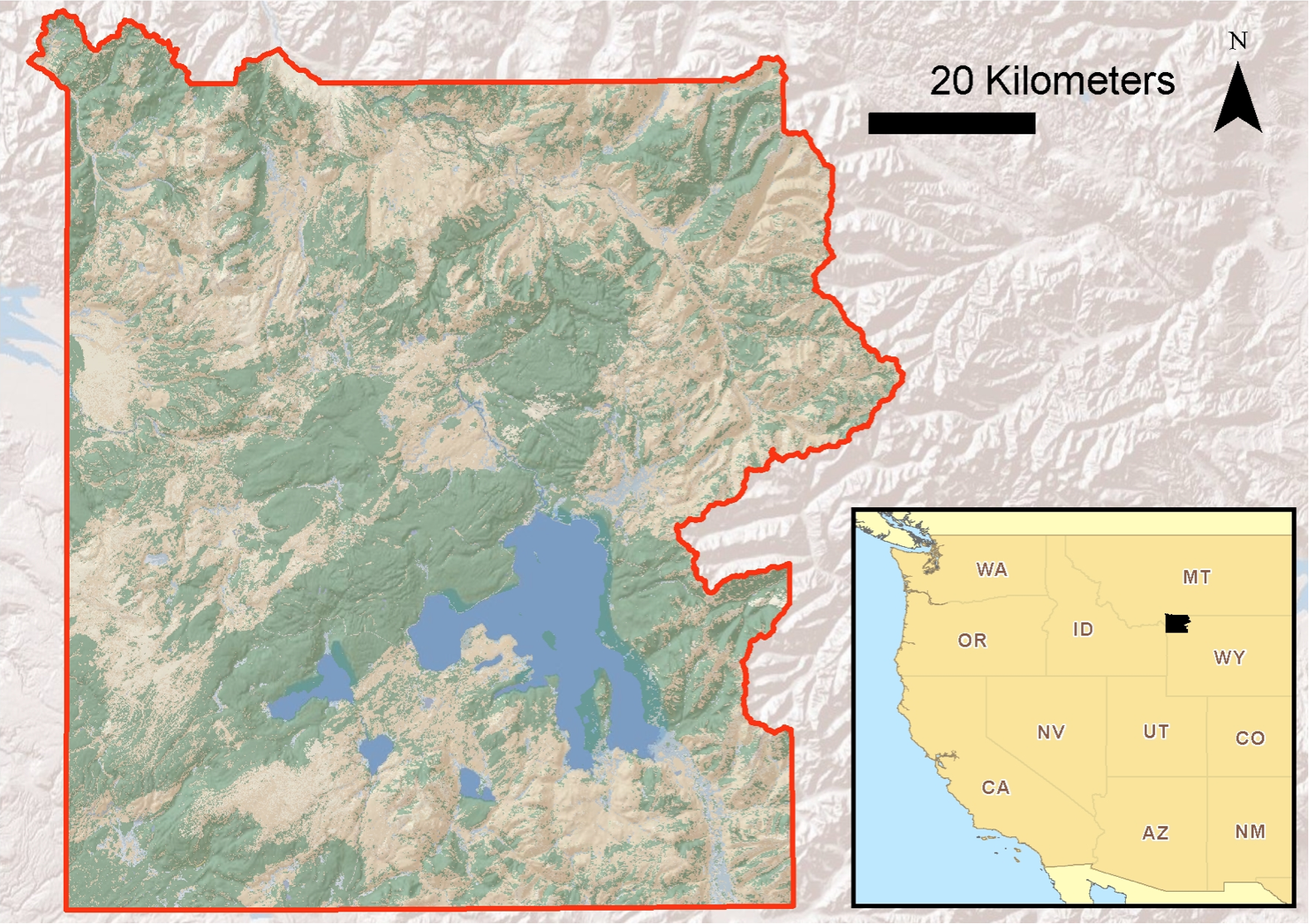Task
Background and problem description
Established in 1872, the Yellowstone National Park is not only the oldest but also one of the most famous national parks in the world. The Park is located in the U.S. states of Wyoming, Montana and Idaho and covers an area of 8,987 square km. It is, amongst others, home to 67 species of mammals and 322 species of birds.
 Yellowstone National Park (National Park Service 2012)
Yellowstone National Park (National Park Service 2012)However, some of this biodiversity is under threat. One example for a species at risk are bighorn sheep, which are native to this area. Bighorn sheep used to roam the western United States in their millions before almost being exterminated by skin hunters by 1900. Today, a few hundred individuals live in Yellowstone National Park (National Park Service 2012). One of the threats their population is faced with is the spread of mountain goats, a species considered to be non-native in Yellowstone National Park. Introduced to the area for sport hunting some decades ago, mountain goats have been making their way into the park where they are feared to outcompete the bighorn sheep with regard to fodder and to carry diseases that may kill bighorn sheep (Gross 2001).
One possible conservation strategy for bighorn sheep that has been relatively successful in the past are relocation of animals to new habitats (Gross et al. 2000). In view of the high translocation cost – a 1999 estimate gave 3000 US$ per relocated mountain goat (Zeigenfuss et al. 2000) – good planning is vital.
Your task is to provide a rational, scientific basis for such a relocation scheme for the park authorities.
Case material
Geodata
You will get the geodata for this Case Study from the teacher of this course. Non-GITTA members interested in this Case Study are welcome to contact the GITTA coordinator (coordinator@gitta.info).
| Data type | Data format |
| Digital elevation model | Raster |
| Forest cover | Raster |
| Land cover | Raster |
| Park boundary | Vector |
| Roads | Vector |
Habitats requirements
Download habitat information sheets for bighorn sheep and mountain goats here
Download: Habitats.zip
Additional information and literature
See list of references (bibliography).
